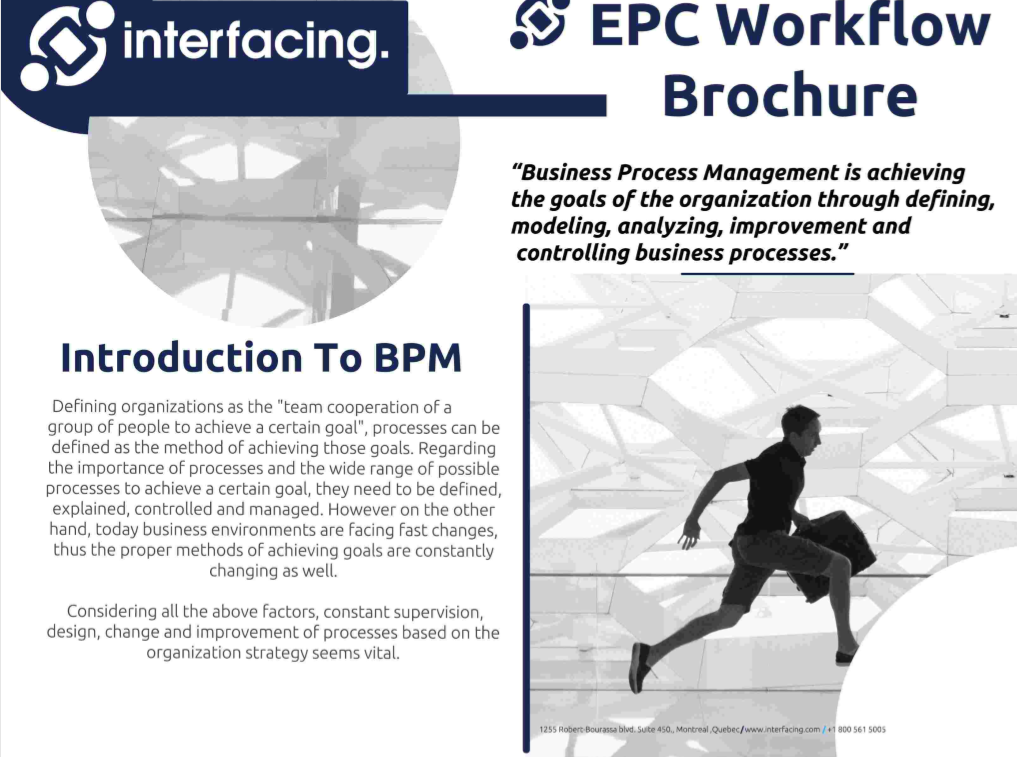Value of BPM for IT Projects

INTRO|
The technological world is ever-changing and the demand for innovation only increases with time, this drives organizations to seek new ways of operating more efficiently to allow for growth. IT investments are on the rise due to organizations hoping to produce greater returns, but IT investments seldom generate revenue on their own. The challenge here isn’t getting IT projects to work but aligning them with business process goals. Business Process Management (BPM) solutions, such as Interfacing’s Enterprise Process Center (EPC), can provide unity among various IT projects to benefit end-user operations, thus maximizing the value of IT investments.

There are numerous of technological innovations that companies can integrate to contribute to technological capabilities but BPM fosters an environment where real business value can be developed. BPM provides the structure that makes IT projects work; it is the necessary link that allows business process goals work well in conjunction with new IT projects so users can reap the gains made available by IT investments. BPM strategies aid IT projects identify and target high impact, low maturity process areas to turn them into value for businesses. A BPM solution is ideally a built-in discipline for process management, sustaining capabilities for change adaption and transforms strategy into people and IT execution. Creating strategy and making that strategy happen.
Interfacing’s EPC software can deliver the methods, tools, and approaches, as well as a systemic use of processes and other informational models in a single repository that is applied to allow businesses stay on track. IT initiatives can benefit from this process-focused approach software for its transformative capabilities, such as change management, enables an easy adoption of new or upgraded applications for continuous improvements. Our software can achieve high performance through process excellence with cost-effective approaches that places an emphasis on transparency and simplicity. Organizations will be able to develop roadmaps that are able to help establish projects that are central to value creation while constructing lasting capabilities to help enable delivery of IT projects with desirable outcomes.
Some of the following value items EPC provides IT projects are listed below:
Technology deployment | Provide information about the current state of the company | Enterprise Project (ERP / CRM / etc…) |
Clarity of Requirements, driven by Process Design | ||
Buy-in at early stage from involved users | ||
Reconfiguration | EPC will provide information about the current state of the company. Collaboration leads for clear requirements | Re-work of requirements that were not effective, no clear definition of what needs to be built neither no clarity of current state |
Training | Clarity of processes and tasks assigned to each role | New Hire |
New roles & tasks assigned to resources | Change of Job, Downsizing/Growth | |
Knowledge Transfer | Clarity of processes and tasks assigned to each role | Terminated Position / Recapture of knowledge |
Centralized repository of documented information | Reallocated Position / Recapture of knowledge | |
Shared knowledge | Critical need for Procedure, Experience, Processes already mapped and web accessed | |
Change Management | Adoption of a new technology | |
Changes in the organization | ||
Continuous Improvement | Allow to better allocate time and resources for projects and reduce project cycle times | Projects not fully productive |
Process redesigned, efficient, standardized, without redundant steps | Out-of-date processes (not time/cost efficient) |
Interfacing uses a proven methodology that is flexible and customized to individual company objectives; permitting businesses, together with IT, find a way to increase value creation with existing and new investments in IT. Contact us for more information on our EPC software.
Read more blogs
EPC Workflow Software
EPC Workflow Brochure
Questions?


